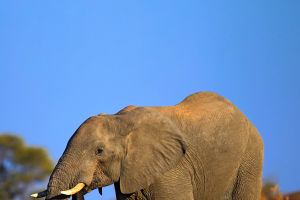Protect It
Polar bears are large and stout, with a shoulder height of up to 1.6 meters. Adult males weigh between 300 and 800 kg and can measure up to 2.5 m in length from the tip of the nose to the tip of the tail. Females are smaller, weighing 150-300 kg and 1.8-2 meters long.
Similar to a brown bear, but without a shoulder.Its head is smaller than other bears, its ears are small and round, and its neck is elongated.
How much do you know about polar bears?
1. February 27th is International Polar Bear Day. Save a piece of ice for polar bears, starting with you and me.
2. It is the largest bear species in the world.
3. The polar bear can run at a speed of 60 km/h on land, which is 1.5 times the speed of the world 100-meter champion.
4. The skin is black, as can be seen from the polar bear's nose, paw pads, lips and dark skin around the eyes. Dark skin helps absorb heat, which is a great way to stay warm.
5. It can maintain a swimming speed of six miles per hour while paddling with the forefoot.
6. It has a large appetite, and can eat up to 70 kilograms of food.
7. The sight and hearing of polar bears are similar to those of humans, and the sense of smell far exceeds that of humans, 7 times higher than that of dogs with a sensitive sense of smell.
Why are polar bears adaptable to extreme arctic weather?
1. Polar bears moved their habitat closer to the relatively warm Arctic Ocean.
And the polar bear's skin is black and the hair is hollow and transparent, which helps it absorb the heat of the sun, which is one way it maintains its body temperature.
2. The success rate of polar bear hunting is still very high. A polar bear's fur is transparent, but it appears white because it reflects the sun and ambient light.
The seemingly white fur blends perfectly with the environment, providing favorable conditions for polar bears to hide. This also greatly improves the survival rate of polar bears.
3. Polar bears are excellent swimmers and were once considered marine animals. But it is not.
Can polar bears adapt to life in Antarctica?
While the South and North Pole are both the poles of the Earth, there are many differences between the two.
First, the South Pole is colder than the North Pole. The annual average temperature in the Arctic region where polar bears live is -18°C and the lowest temperature is -68°C, while the average temperature in the Antarctic region is -50°C and the lowest temperature can even reach -89°C.
Such a temperature is not a small challenge for polar bears with outstanding cold resistance.
The central Antarctic is the continent, and the central Arctic is the ocean and ice floes. Although the continent appears to be more stable and safer, ice floes are more important to polar bears in terms of their hunting habits.
Because although polar bears are master swimmers, they are not aquatic animals after all, and they cannot catch seals, beluga whales and other animals directly into the water.
Some studies suggest that in 80 years, polar bears will be invisible in the Arctic.


